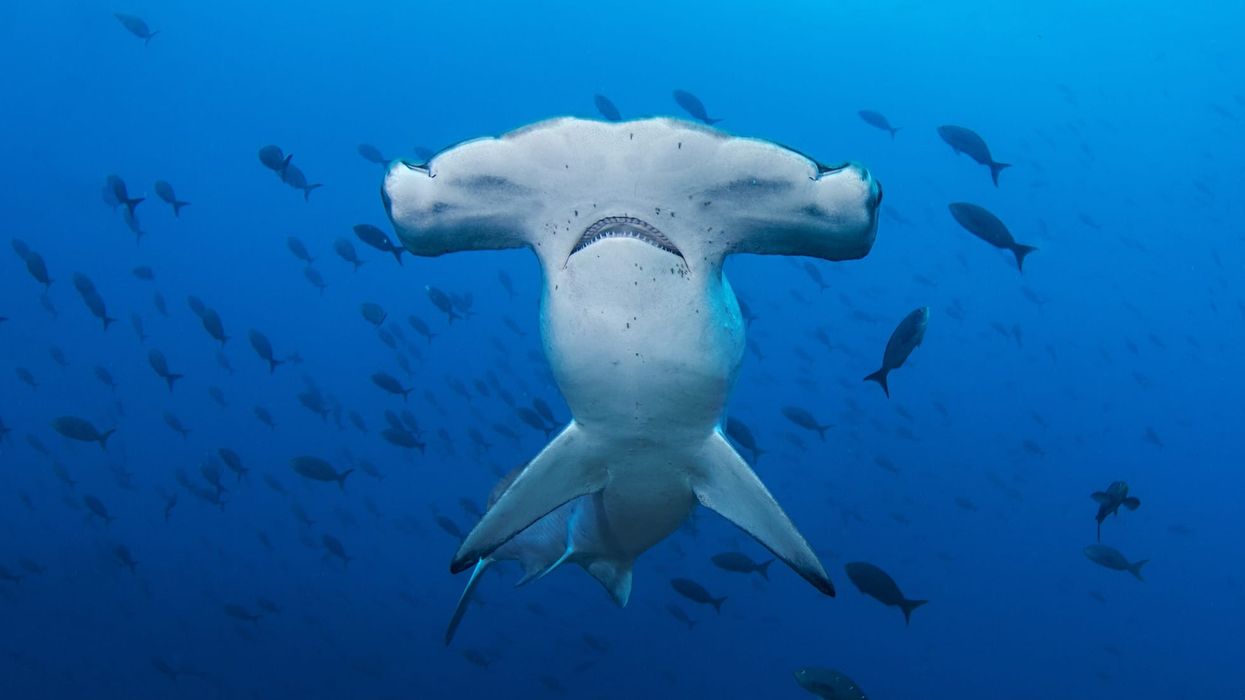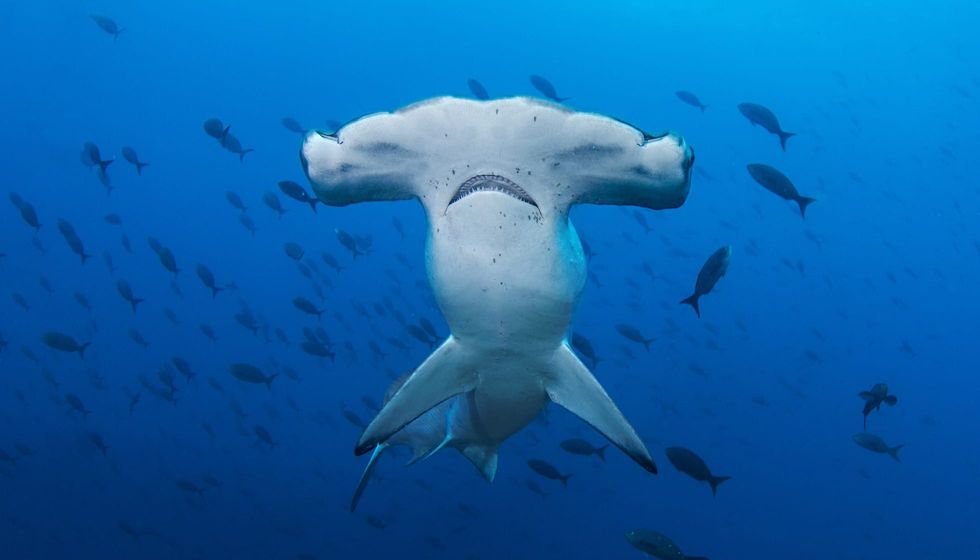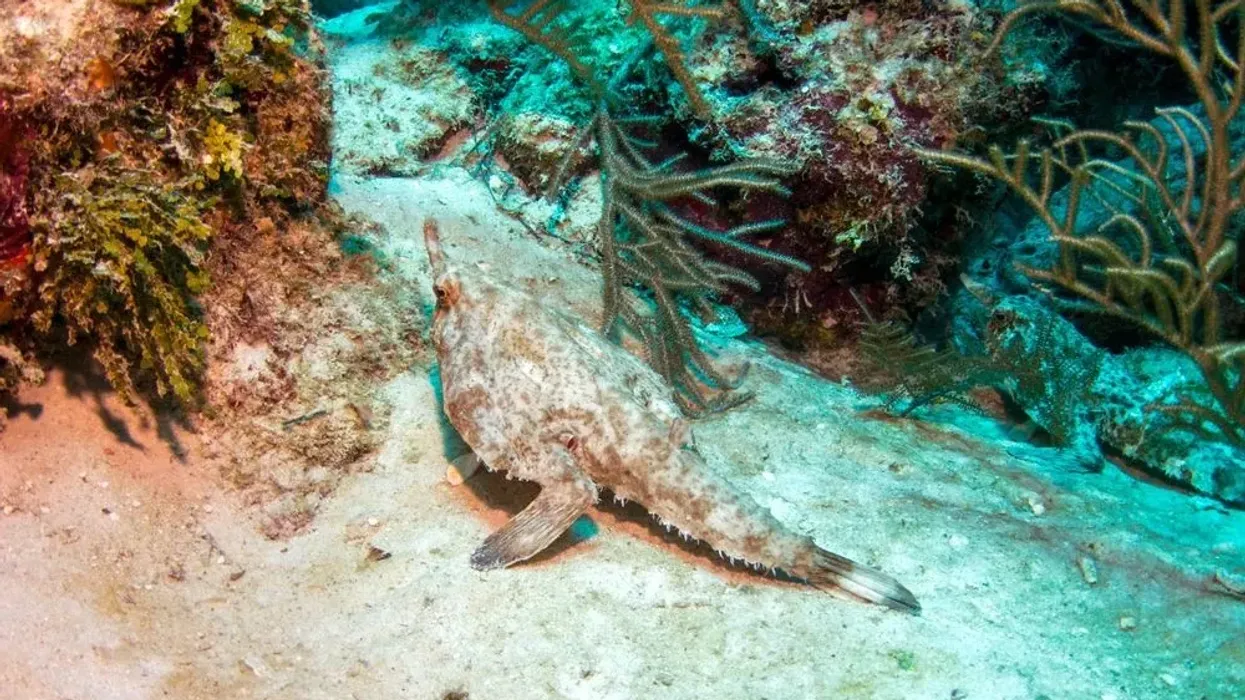Scalloped hammerhead sharks are one of the most commonly found sharks in the coastal waters. They are indigenous to South Asia and have eight different shark subspecies.
Their most unique characteristic is their unusually shaped head, which provides the shark with many advantages. It means that this species is able to swim and turn swiftly and quickly. This hammerhead is what makes it exceptional from other species of sharks.
Its scientific name previously was Zygaena lewini, but it was later renamed Sphyrna lewini. It is also referred to as a 'kidney-headed shark', a 'southern hammerhead shark', and a 'bronze shark'.
This shark, scientifically known as the Sphyrna lewini, can be usually found swimming in warm, temperate, and deep ocean water bodies, like the Atlantic. It is found at depths of approximately 1600 ft (500 m).
Its physical description, except for its head, is much like that of other sharks with its upper side's color varying from grayish-brown to olive green, and its lower side is white. Their color helps them by allowing them to camouflage into their surroundings in order to effectively hunt their prey.
This species is officially listed as a Critically Endangered one due to overfishing for its shark fins. The scalloped hammerhead's population has substantially declined in the Atlantic Ocean by about 95%! Keep on reading to know more about the behavior and the biology of the scalloped hammerhead, Sphyrna lewini.
If you like reading these fun facts about scalloped hammerhead sharks, you can also check out our facts on the Caribbean reef shark and the zebra shark too!
Scalloped Hammerhead Shark Interesting Facts
What type of animal is a scalloped hammerhead?
The scalloped hammerhead, Sphyrna lewini, is a shark species of the genus Sphyrnaand that belongs to the family of Sphyrnidae.
Being a shark, it's a carnivore and it likes to swim in warm water bodies at a depth of approximately 1,600 ft (500 m). It is overfished for its shark fin as which is used in a recipe for a special shark fin soup.
They prefer to travel and hunt in large schools as this makes survival easier for them, but it also makes them vulnerable as fishing these sharks is easier when they are found in large groups.
What class of animal does a scalloped hammerhead shark belong to?
The olive-green colored scalloped hammerhead shark belongs to the class of Chondrichthyes which tells us that this fish is a cartilaginous fish.
How many scalloped hammerheads are there in the world?
As of now, the exact number of these sharks is unknown, but we do know that between 1.3-2.7 million shark fins from this family are amassed each year.
Where does a scalloped hammerhead live?
These hammerheads reside in warm tropical temperate coastal waters. They live in coastal areas with moderate, subtropical, and tropical weather. These sharks are surrounded by large schools of their own species and they can be found in places like the Red Sea, the Indian Ocean, the Pacific Ocean, Hawaii, Japan, Australia, South Africa, and Tahiti.
They can be seen from New Jersey to Brazil in the Atlantic Ocean, covering the Gulf of Mexico and the Caribbean Sea. Large groups of this species of hammerheads can be spotted in the Gulf of Mexico from January to March.
You can also spot them in the Pacific Ocean from southern California all the way to Ecuador. They can also be found in Peru in the eastern Pacific Ocean.
What is a scalloped hammerhead's habitat?
Scalloped hammerhead sharks swim in the range of as shallow as 80 ft (25 m) and as deep as 1640 ft (500 m). They can also be found normally near the shore during their breeding season.
The hammerhead pups customarily live inshore. The mature sharks swim close to shore throughout the daytime and then hunt for prey at night time in the deep ocean.
Who do scalloped hammerheads live with?
Scalloped hammerhead sharks can be found alone, in a male-female pair, or with large groups of their own species. They are often found in large groups for protection purposes and in order to more easily hunt prey.
These hammerheads form groups surrounding females to protect them, females remain in the center of the group as they travel through the ocean.
How long does a scalloped hammerhead live?
This species of hammerhead sharks can live for a range of 20-25 years.
How do they reproduce?
The gestation period for the scalloped hammerhead shark is 12 months. Females can produce a range of 12-38 hammerhead pups and this shark species is viviparous.
This means that their eggs hatch inside the female shark's body and the pups feed on her yolk placenta until birth. Females give birth to live young scalloped pups. Females can breed only once a year.
What is their conservation status?
The hammerhead shark, Sphyrna lewini, is marked as Critically Endangered in the IUCN's Red List. This is mainly because these sharks are being overfished for their fins and their breeding range is low.
Their fin is used to make a famous delicacy, shark fin soup. Species in the Atlantic Ocean have significantly dropped by 95%, which is shocking to read. Even in the Pacific's Central Pacific, Indo-West Pacific, and Southwest Pacific regions, they have been officially classified as a threatened species.
Scalloped Hammerhead Fun Facts
What do scalloped hammerheads look like?
A scalloped hammerhead shark (Sphyrna lewini) possesses a uniquely shaped head. Its double hammerhead is what differentiates it from other shark species.
Their 'hammer' head (also known as the 'cephalofoil') is very soft and is made of cartilage. It acts as a radar aiding the shark in surveying the sea for prey. Their eyes are located at either side of their head and their color varies from grayish-brown to olive green on the top and white underneath.
Their fins are a darker shade at birth but get lighter as they mature. Their color helps them to camouflage with their surroundings when hunting prey.
As their name suggests, the scalloped hammerhead shark has a scalloped appearance. They also possess sharp eyesight and can take quick and sharp turns because of their hammerhead.
Apart from that, to find their favorite kind of prey, stingrays, they use their sensory organs to locate them and their special head helps them to tackle the stingray. They can even grow as long as 14 ft (4.3 m) in length!

* Please note that this is an image of a hammerhead shark, not a scalloped hammerhead specifically. If you have an image of a scalloped hammerhead, please let us know at hello@kidadl.com
How cute are they?
Scalloped hammerhead sharks are shy sharks makes them seem quite cute. Their uniquely shaped head also gives them an interesting look, but they aren't exactly friendly. If they feel scared, they can attack humans for their own protection. They don't attack humans often, but whenever they do, it's usually done because of fear.
How do they communicate?
They communicate with the help of their body by making different body language gestures. The scalloped hammerhead shark also has specialized sensory cells which can identify another fish's electric field and their hammerhead helps them in employing these cells more precisely. They can even discover animals that are buried underneath the ground!
How big is a scalloped hammerhead?
Female hammerheads of this species are bigger than males. They can be as long as 3-19 ft (0.9-6 m). They are quite big in size but are still smaller than the great hammerheads.
How fast can a scalloped hammerhead swim?
They can swim as fast as 25 mph (40 kph).
How much does a scalloped hammerhead weigh?
Male sharks of this species weigh about 64 lb (29 kg) on average whereas females weigh heavier at 180 lb (80 kg). Overall, they can weigh anything between 64-335 lb (29-152 kg).
What are their male and female names of the species?
There are no specific names for males and females.
What would you call a baby scalloped hammerhead?
A baby hammerhead is called a pup.
What do they eat?
They eat bony fish like herrings, mackerel, and sardines. They also eat squid and octopus. Sometimes they even eat sharks of a smaller size and a different species. They love to eat stingrays and their feeding habits are very similar to those of the shark Carcharhinus.
Whilst it is a fierce predator, this species of shark can also become prey to other fish. The scalloped hammerhead shark, Sphyrna lewini, can be eaten by great white sharks, tiger sharks, and orcas.
Are they dangerous?
These sharks are quite dangerous if provoked. Generally, they are shy fish who like to swim alone or in a pair and meet seasonally during their breeding period. There have been instances of attacks though and these sharks can put up a good defense if they feel frightened.
Would they make a good pet?
No, these sharks wouldn't make a good pet as they like to live in large groups in the wild, free from captivity. They are not known to be violent towards humans unless disturbed but, if they are spooked, their attacks can even prove to be fatal.
As well as this, their health deteriorates faster than usual if kept in captivity. Neither are they safe to move nor are they cheap.
Did you know...
The hammerhead shark, Sphyrna lewini, usually eats bony fish, invertebrates, and stingrays, but they also practice cannabilism, the act of eating each other. They can eat injured or sick fish of their own species.
Out of the nine species of hammerheads, the great hammerhead shark has been proved to be the most aggressive and violent towards humans.
Because of the uniquely shaped heads of these sharks, they tend to get stuck in fishnets easily.
These sharks have a well-developed mind, making them an intelligent species.
These sharks have a very long dorsal fin attached to their body.
Why are scalloped hammerheads endangered?
The scalloped hammerhead shark, Sphyrna lewini, is critically endangered as per the IUCN's Red List of Endangered Species. Its population has decreased by about 90% in the Southwest Atlantic and by 98% in the Northwest Atlantic.
1.3-2.7 million scalloped hammerhead sharks are killed for shark fins each year and it is this practice that puts these fish at such risk.
Many conservationists believe that shark finning must be banned. This is the process in which the fins of sharks are cut off and used in the popular delicacy, shark fin soup.
Why are scalloped hammerheads important?
These scalloped hammerhead sharks, Sphyrna lewini, are carnivores and are among the top animals on the food chain. They help to maintain the biological stability of the ocean.
Here at Kidadl, we have carefully created lots of interesting family-friendly animal facts for everyone to discover! Learn more about some other fish including the nurse shark, or the basking shark.
You can even occupy yourself at home by drawing one on our horn shark coloring pages.










